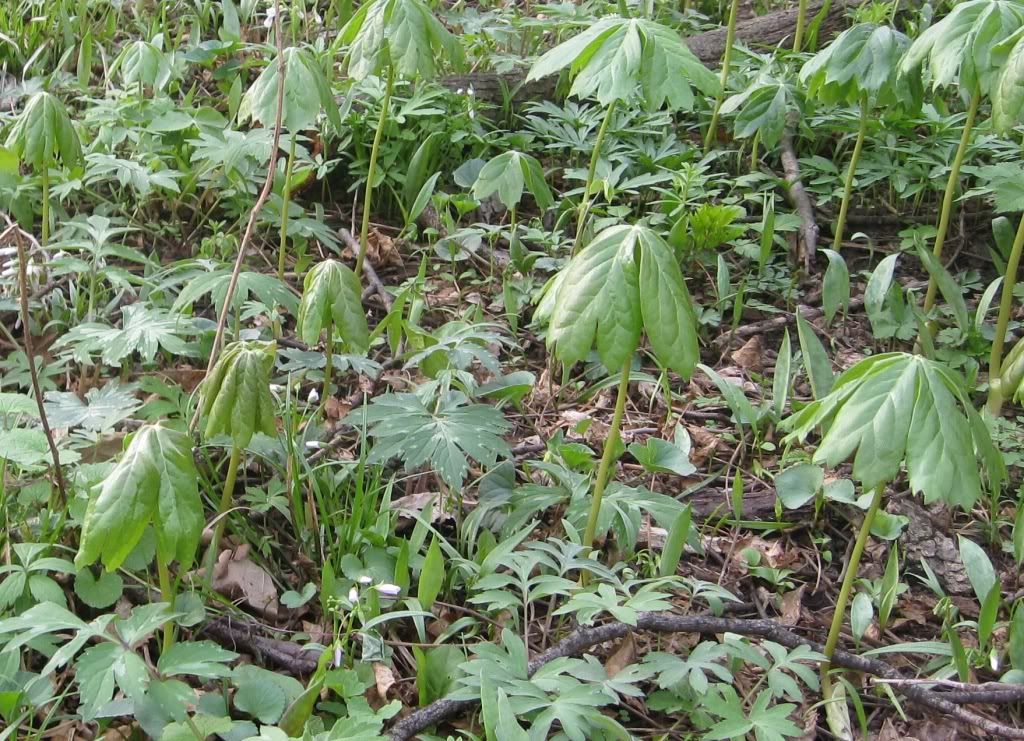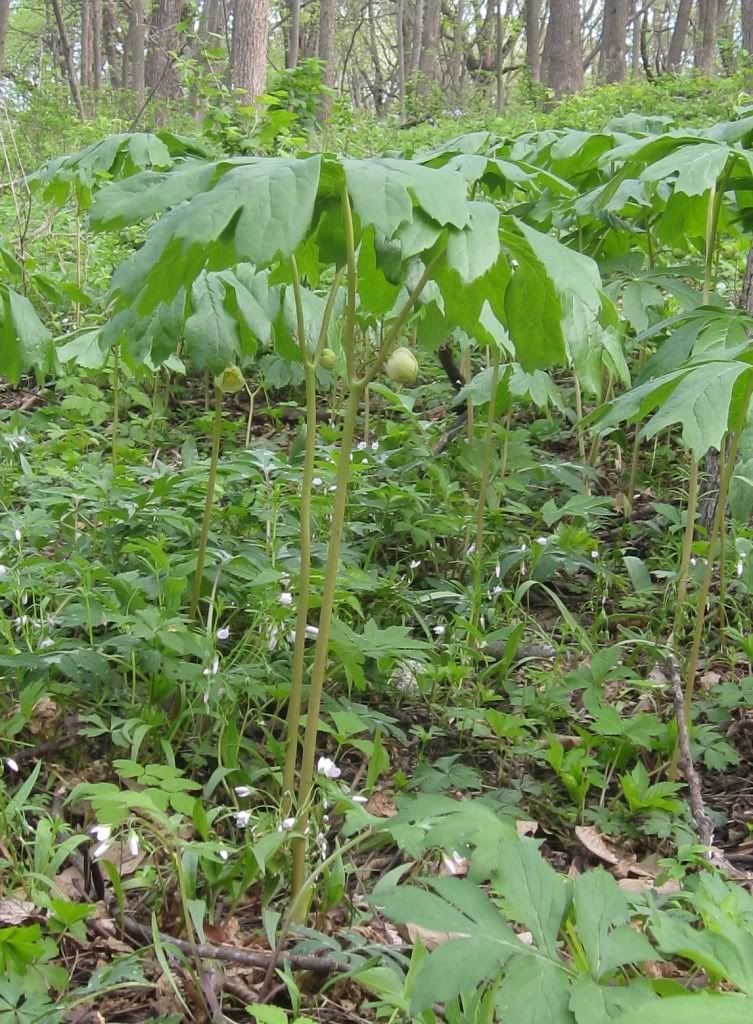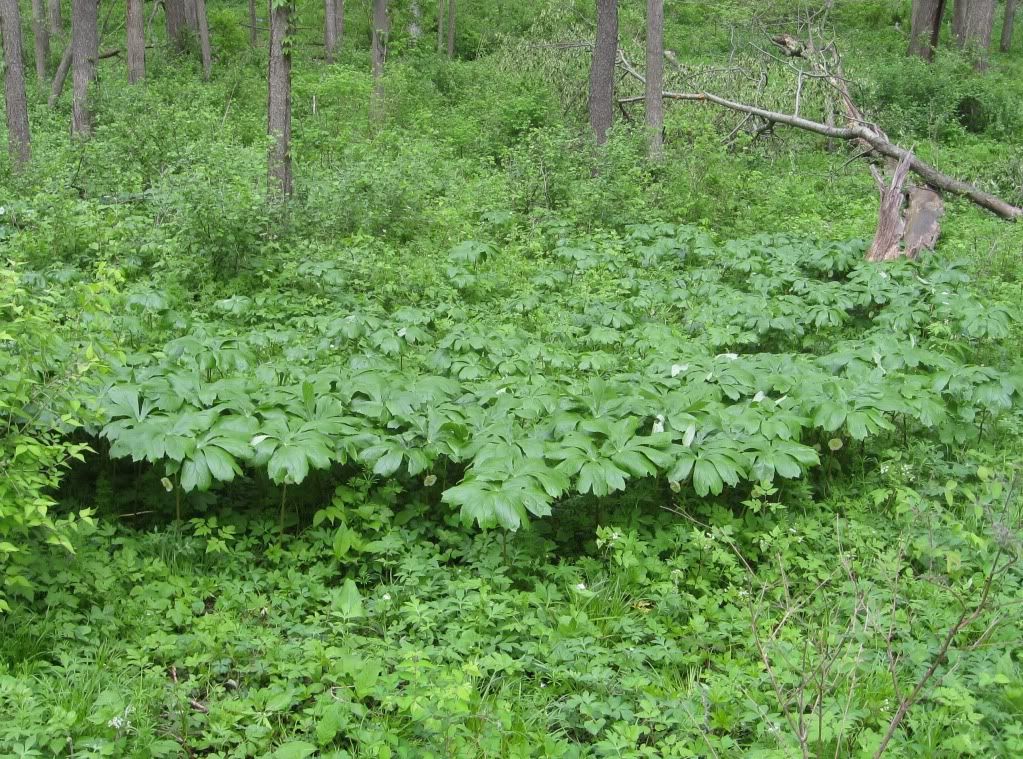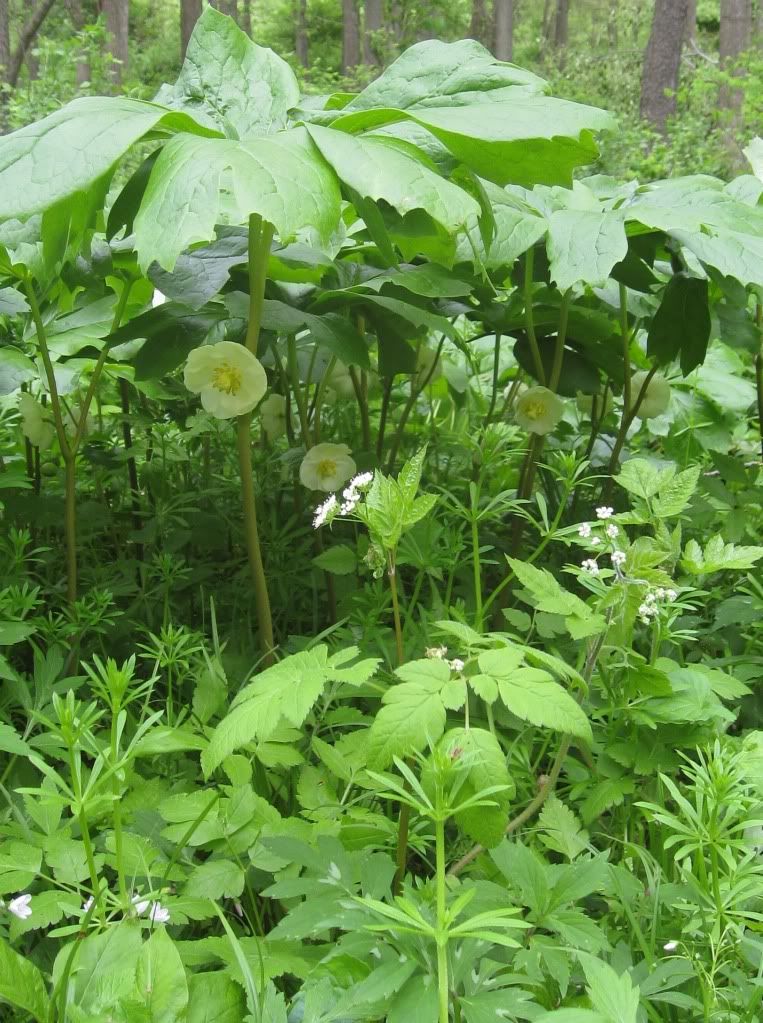This week’s wildflower is a favorite for many people I know. May apples typically bloom in May (hence the name), but this year flowers appeared several weeks early in central Iowa. Also known as umbrella plants, these flowers are easy to spot, since they often grow in large colonies. A bunch of photos are after the jump.
This is an open thread. I’m not planning to write a separate post about First Lady Michelle Obama’s visit to Windsor Heights yesterday, or President Barack Obama’s speech at the University of Iowa today, so any comments about those events are welcome here. I would advise “fired up and ready to go” students to focus their volunteer energy on one of the competitive Iowa House or Senate races within striking distance of Iowa City.
May apples emerge in March or early April. Within days, the leaves start to spread out like umbrellas.
Some spring beauties are about to open in that photo, and you can also see the mottled leaves of some dogtooth violets (not blooming yet).
Umbrella plants with only one leaf on the stalk don’t flower. On double-leafted plants, you can start to see buds at the center of the “Y” as soon as the leaves spread out.
As I mentioned above, May apples usually bloom in May. I’ve seen blossoms in late April before, but this year my son spotted an open flower ridiculously early, on Easter Sunday (April 8):
The purple five-leafed flowers near the center of that photo are Sweet William (phlox). Some spring beauties are blooming near the far left and right side of the picture, and in the bottom left corner there’s some crowfoot buttercup (tiny yellow flowers on fairly long stems).
Rarely will you encounter one umbrella plant. They tend to grow in large groups like this:
Adults can easily miss the flowers, because sometimes you have to crouch down to see them.
That’s sweet cicely, also known as wild licorice, blooming near the center of the photo. Some spring beauties are near the bottom left.
According to Wildflowers of Iowa Woodlands by Sylvan Runkel and Alvin Bull, the roots, foliage, and small fruit that grow on these plans “are all poisonous to some degree. Direct contact causes a skin rash for some people.” The fruit is less toxic when ripe, and pioneers made preserves from May apples, sometimes using it to treat diarrhea. One New York City blogger posted a “cautionary tale” about eating May apples foraged in Central Park.
Modern medical researchers are studying May apples, because they contain a compound used to treat several types of cancer and psoriasis, arthritis, and genital warts. Runkel and Bull write,
The Potawatomi and Meskwaki tribes favored May apple as a treatment for snakebite. They also brewed it into a tea to treat dropsy. Others included May apple in a mixture of herbs used for syphilis.
May apple was also the ingredient of treatments for urinary, liver, bowel and skin disorders–including warts.
Menomini Indians used May apple as an insecticude. They boiled the entire plant and splashed the resulting liquid over their potato plants to control insects.





